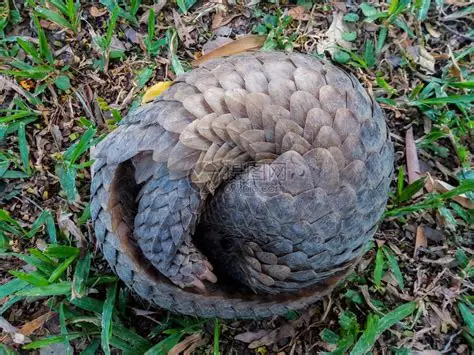Manis pentadactyla

The Chinese pangolin (scientific name: Manis pentadactyla) is an animal belonging to the genus Manis in the family Manidae. The Chinese pangolin is relatively small, with a head-body length of 40 to 58 cm, a tail length of 25 to 38 cm, and a weight of 3 to 5 kg, with males being slightly heavier. It has a short head, large ears, and a flat tail that is slightly shorter than its body, covered with 9 to 10 longitudinal scales. This species has no teeth and relies on its long, thin tongue covered in mucus to capture prey. Its limbs are short, stout, and powerful, with strong, curved claws on the middle and second/fourth toes of the forelimbs. The Chinese pangolin’s entire body is covered with hard, overlapping scales, numbering between 15 and 18 rows, primarily black, brown, and dark gray in color. White and brownish-yellow stiff hairs grow between the scales, on the cheeks, eyes, ears, neck and abdomen, the outer sides of the limbs, and the base of the tail; very few areas have downy hairs.
The Chinese pangolin is distributed in China, Bhutan, India, Laos, Myanmar, Nepal, Thailand, and Vietnam. It primarily inhabits primary and secondary tropical forests, limestone areas, bamboo forests, broad-leaved and coniferous forests, grasslands, and farmland. The Chinese pangolin is timid, solitary, and typically nocturnal. It is a narrow-minded predator, feeding mainly on termites and ants. While little is known about the lifespan of the Chinese pangolin, records show one captive pangolin surviving for 15.3 years.
The Chinese pangolin is listed in the National Key Protected Wild Animals List (2021) as a Class I protected animal in China. In 2019, the Chinese pangolin was listed on the IUCN Red List of Threatened Species (ver 3.1) as critically endangered.





